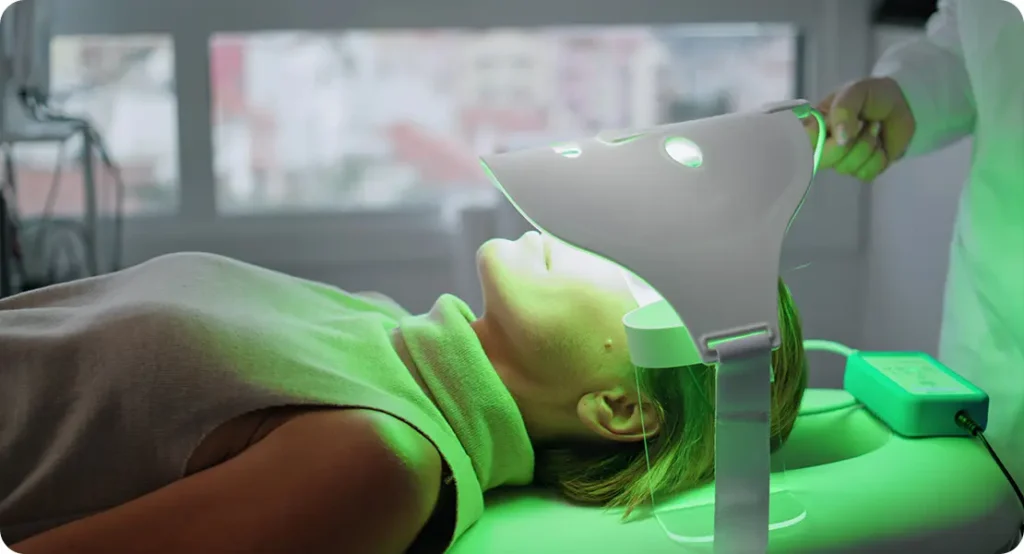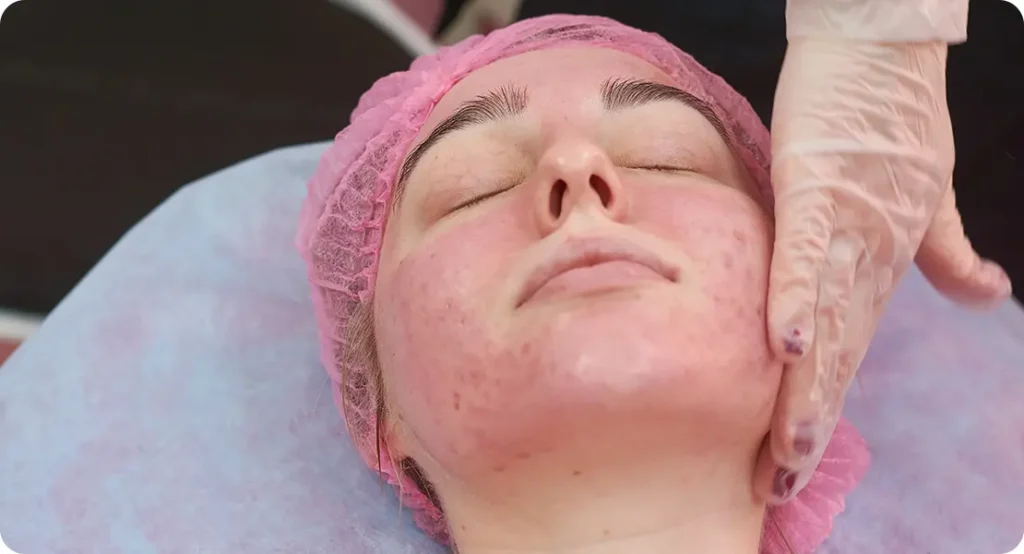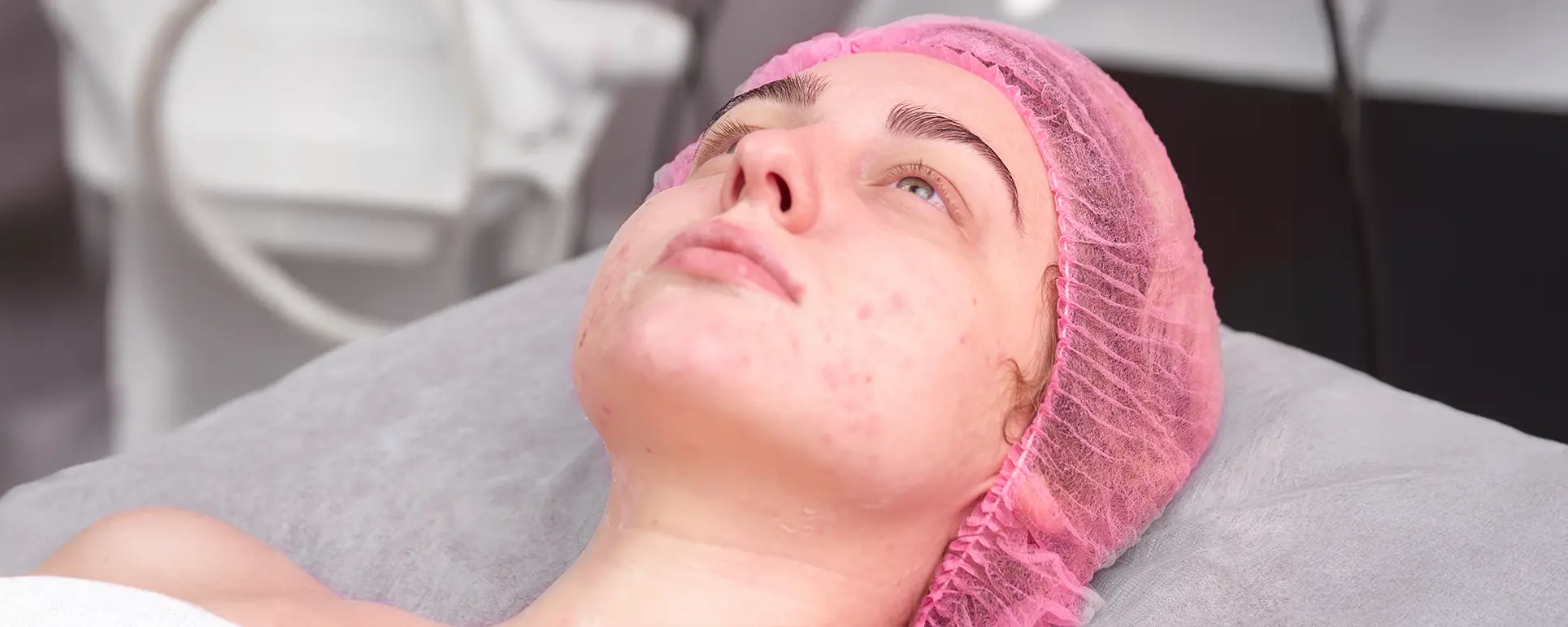If you live with rosacea, you know how unpredictable and frustrating the condition can be. It’s not just a matter of occasional facial redness this chronic skin disorder can involve persistent flushing, visible blood vessels, inflammatory bumps, burning sensations, and heightened sensitivity to everything from weather changes to skincare products. For many, rosacea goes beyond physical discomfort. It often takes a toll on confidence, mental well-being, and quality of life. You might avoid social outings, photos, or certain foods not because you want to, but because you’re worried about triggering a flare-up. And while there are treatments that can help manage symptoms, finding something that works for you often involves a lot of trial and error.
But there’s good news: the future of rosacea treatment is looking brighter than ever. In recent years, scientific research into rosacea has accelerated, shedding new light on the biological mechanisms behind this complex condition. As a result, researchers and dermatologists are now exploring a new generation of therapies that go far beyond the traditional antibiotics and topical creams. From advanced anti-inflammatory medications that target specific immune pathways, to cutting-edge laser and light therapies that improve skin appearance with minimal downtime, to fascinating new research into the skin microbiome and how gut health may play a role there’s a wave of innovation coming that could offer more personalised, effective, and long-lasting relief.
In this article, I’ll Walk you through some of the most promising developments in rosacea research, the latest clinical trials to watch, and what these breakthroughs could mean for you. Whether you’re newly diagnosed or have been managing rosacea for years, understanding these new approaches can give you more options and more hope.
Why We Need Better Rosacea Treatments
Before we dive into the exciting new developments in rosacea research, it’s important to understand why this condition remains so difficult to manage and why innovation in treatment is so urgently needed.
Unlike many other skin issues that have a relatively straightforward cause and treatment path, rosacea is a highly complex and multifaceted condition. That’s part of what makes it so frustrating, both for those who live with it and for the dermatologists who treat it.
There isn’t a single root cause behind rosacea. Instead, the condition is driven by a combination of interconnected biological factors, which can vary significantly from person to person. Here are some of the key elements believed to be at play:
- Chronic inflammation: Rosacea is now widely recognised as an inflammatory condition. The skin’s immune system overreacts to everyday stimuli such as sunlight, spicy foods, extreme temperatures, emotional stress, or alcohol leading to redness, swelling, and sometimes acne-like bumps. This heightened immune response can become a vicious cycle that’s hard to break.
- Vascular dysfunction: One of the hallmark symptoms of rosacea is persistent facial redness and visible blood vessels. This is largely due to abnormal dilation of the tiny capillaries near the skin’s surface. These blood vessels become overly reactive and stay widened for longer periods, which leads to the chronic flushing many people with rosacea experience.
- Microbial imbalance: Although rosacea isn’t an infectious disease, the microbes living on our skin such as the Demodex mite or certain types of bacteria may contribute to flare-ups in some individuals. An overgrowth or imbalance of these microbes can irritate the skin or trigger immune reactions, further fueling inflammation and discomfort.
- Genetic factors: Rosacea also tends to run in families, suggesting a hereditary component. If your parents or siblings have it, you’re more likely to develop it too. However, the specific genes involved are still being studied, and researchers believe they may influence how the body responds to inflammation, UV exposure, and microbes.
The combination of all these factors makes treating rosacea particularly challenging. What works brilliantly for one person might do little for another or even make things worse. That’s why many people with rosacea go through multiple treatments before finding something that provides real relief.
But there’s a silver lining. Because rosacea is influenced by so many mechanisms, there are multiple potential points for intervention. And researchers are beginning to capitalise on that. Instead of focusing on just one symptom or cause, they’re exploring a wide range of treatment strategies from calming the immune response and rebalancing the skin microbiome to repairing blood vessels and even addressing genetic pathways.
Advances in Anti-Inflammatory Therapies

One of the most promising areas of rosacea research right now is the development of new anti-inflammatory therapies medications designed to calm the skin’s overactive immune response with greater precision and fewer side effects. Inflammation plays a central role in many forms of rosacea, especially those that involve papules, pustules, or persistent redness. So finding better ways to manage it is critical.
While traditional treatments like metronidazole creams or azelaic acid gels have been staples for years, they don’t work for everyone. Some patients experience minimal improvement or find that these products cause stinging, dryness, or irritation over time. This has pushed researchers to explore more sophisticated options that go beyond just suppressing symptoms and aim instead to interrupt the inflammation at its source.
Here are a few of the newer and more targeted anti-inflammatory therapies currently being studied:
- Topical Ivermectin
Originally used to treat parasitic infections, topical ivermectin has shown impressive results in reducing rosacea symptoms especially when Demodex mites are involved. However, its benefits go beyond mite control. It also exhibits strong anti-inflammatory properties, which help reduce facial redness and inflammatory bumps. It’s already approved in many countries and has become a go-to option for patients who don’t respond well to traditional treatments. - Minocycline Foam
Minocycline is a well-known oral antibiotic, but when used topically in foam form, it delivers targeted anti-inflammatory effects with fewer systemic risks. The foam formulation is designed to penetrate the skin more easily and reduce irritation. Studies suggest it may help calm flare-ups, reduce pustules, and improve overall skin texture in people with inflammatory rosacea. - Rifaximin
Rifaximin is an oral antibiotic typically used for treating gut-related conditions, especially small intestinal bacterial overgrowth (SIBO). Intriguingly, some research has shown that patients with rosacea and confirmed SIBO experience significant improvement in their skin symptoms when treated with rifaximin. This has sparked interest in the gut-skin connection, and whether managing internal inflammation could help control external symptoms. - Novel PDE4 Inhibitors
Phosphodiesterase-4 (PDE4) inhibitors are an emerging class of drugs that work by blocking enzymes involved in the inflammatory process. Unlike corticosteroids, which can thin the skin over time, PDE4 inhibitors offer targeted relief without long-term skin damage. Some topical formulations are already approved for other inflammatory conditions like eczema, and early trials for rosacea look promising in terms of reducing redness, swelling, and discomfort.
As these new treatments progress through clinical trials, dermatologists are hopeful they will soon have more personalised, effective options to offer patients especially those who haven’t seen results from older therapies. With fewer side effects and more specific targets, these innovations could dramatically improve the day-to-day experience of living with rosacea.
Laser and Light-Based Advances

If you’ve tried creams, gels, or oral medications but still struggle with stubborn redness, visible capillaries, or flushing, you’re far from alone. These vascular symptoms are often among the most persistent and frustrating aspects of rosacea and they don’t always respond well to pharmaceutical treatments.
That’s where laser and light-based therapies come in. These non-invasive procedures have become a trusted option for targeting the underlying blood vessel abnormalities associated with rosacea. And the good news? The technology behind them continues to evolve, offering better results with fewer side effects and shorter recovery times.
Here’s a closer look at some of the latest advancements:
- Pulsed Dye Lasers (PDL)
PDLs have been a mainstay in rosacea treatment for years, but recent refinements in pulse duration, energy control, and cooling technology have improved both safety and comfort. These lasers work by selectively targeting and shrinking dilated blood vessels, helping to reduce persistent redness and flushing. Newer models are also gentler, meaning less bruising and downtime after each session. - KTP Lasers
Using a different wavelength than PDL, KTP lasers are especially effective for treating finer, more superficial vessels making them ideal for early-stage rosacea or subtle telangiectasia. They’re also known for their precision, which reduces the risk of damaging surrounding tissue. - Intense Pulsed Light (IPL)
Unlike true lasers, IPL devices emit multiple wavelengths of light, allowing them to address both redness and pigmentation issues at once. Recent studies have found that IPL doesn’t just improve skin appearance it may also lower certain inflammatory markers in the skin, offering therapeutic benefits beyond cosmetics. It’s a great option for patients with both vascular and inflammatory rosacea symptoms. - Fractional Lasers
For individuals who experience not just redness but also thickened or rough skin (especially around the nose), fractional resurfacing can be a game-changer. These lasers work by creating microscopic zones of controlled damage, prompting collagen renewal and improving overall texture while still being safe for rosacea-prone skin. - Combination Treatments
Increasingly, dermatologists are using a multi-pronged approach combining vascular lasers with topical anti-inflammatories or oral medications. This can help extend the results of laser treatment and address different aspects of rosacea at the same time. Some clinics are also exploring alternating laser types across treatment sessions to tackle both superficial and deeper vessels more effectively.
If you’re thinking about laser or light-based therapy, it’s worth having a detailed discussion with a board-certified dermatologist. The right device, settings, and treatment plan can make a big difference depending on your unique symptoms and skin type. As technology continues to advance, these procedures are becoming more customisable, more comfortable, and more effective than ever before.
The Promise of Microbiome-Targeted Treatments

One of the most intriguing and rapidly growing areas of rosacea research focuses on the skin microbiome the complex ecosystem of bacteria, mites, fungi, and other microorganisms that naturally live on the skin’s surface. While the idea of microbes living on your face might sound unsettling, many of them are actually essential for maintaining healthy skin. But when this delicate balance is disrupted, problems like inflammation, sensitivity, and flare-ups can follow.
This insight has led scientists and dermatologists to explore a new strategy: instead of simply trying to suppress symptoms with anti-inflammatories or antibiotics, why not restore microbial balance and support the skin’s natural defences?
Here are some of the most promising approaches being studied:
- Topical Probiotics
These are skincare products that contain live or lysed (broken-down) beneficial bacteria, designed to support a healthy skin microbiome. By boosting good microbes and outcompeting the harmful ones, probiotics may help reduce inflammation and redness over time. Early trials have shown promising results in lowering discomfort, calming flare-ups, and improving skin texture in rosacea-prone individuals. - Microbiome-Friendly Skincare
Harsh soaps and exfoliants can strip away not just dirt and oil but also the helpful bacteria your skin needs to function properly. That’s why many dermatologists now recommend gentle, microbiome-preserving cleansers and moisturisers as part of a rosacea treatment routine. These products are formulated to maintain the skin’s protective barrier while supporting microbial diversity, which may reduce irritation and improve resilience over time. - Targeted Antimicrobials
Traditional antibiotics often wipe out both good and bad bacteria, potentially upsetting the skin’s balance even further. That’s why researchers are now working on narrow-spectrum antimicrobials treatments that specifically target problematic organisms (like Demodex or Bacillus oleronius, a bacterium associated with the mites) without harming the beneficial bacteria. These more selective therapies could reduce side effects and help preserve long-term skin health.
Although this area of research is still in its early stages, it holds incredible promise. By focusing on the microbiome, scientists are unlocking a new way to manage rosacea one that treats the root causes rather than just masking the symptoms.
New Insights into Triggers and Lifestyle Factors

Beyond medications and topical treatments, researchers are gaining a deeper understanding of the everyday factors that influence rosacea flare-ups. One reason this condition can be so unpredictable is that its triggers are highly individual what sets off a reaction in one person might be completely harmless for another. Still, recent studies are shedding light on some common patterns and biological links that can help guide lifestyle choices.
Here’s what science is revealing about rosacea and its relationship to the broader environment and body:
- The Gut-Skin Connection
One of the most compelling discoveries in recent years is the link between gut health and rosacea. Conditions like small intestinal bacterial overgrowth (SIBO) and general digestive imbalances may contribute to systemic inflammation, which in turn can show up on the skin. This has sparked interest in probiotics, dietary changes, and even gut-focused treatments like rifaximin to help manage rosacea symptoms from the inside out. - Dietary Triggers
While classic culprits like spicy foods, hot beverages, and alcohol continue to top the list of common rosacea triggers, newer research underscores the importance of individual sensitivity. Some people find that tomatoes, chocolate, or dairy worsen their symptoms, while others have no issue at all. Keeping a food and symptom diary can help identify personal patterns and tailor your diet accordingly. - Stress and Emotional Well-Being
Psychological stress doesn’t just affect your mood it also has a measurable impact on your skin. Stress activates the nervous system, which can lead to increased blood flow to the face and trigger flushing. Studies have found that people with rosacea often report flare-ups during periods of emotional strain. That’s why stress management techniques like meditation, yoga, or simply building in moments of calm throughout the day are often recommended as part of a holistic treatment plan. - Environmental Exposures
External elements like air pollution, wind, extreme temperatures, and UV radiation can all aggravate rosacea. UV exposure in particular is a well-documented trigger, making broad-spectrum sunscreen a must-have for daily use. Protective clothing, avoiding midday sun, and using physical rather than chemical sunscreens can also help reduce flare-ups caused by the environment.
As research continues to highlight these connections, dermatologists are increasingly recommending personalised lifestyle strategies alongside medical therapies. Rather than applying a one-size-fits-all approach, modern rosacea care now focuses on identifying and minimising individual triggers leading to better outcomes and fewer flare-ups over time.
What Does This Mean for You?
If you’ve been dealing with the ups and downs of rosacea trying different treatments, avoiding known triggers, and still struggling with flare-ups you’re not alone. For many people, managing rosacea can feel like a frustrating cycle of temporary relief followed by unexpected setbacks. But the good news is that the landscape is changing.
The latest research is opening doors to more personalised and effective approaches, which means the future of rosacea care looks far more hopeful than it did even a decade ago.
Here’s what you can expect to see in the coming years:
- More targeted treatments
New topical and oral medications are being developed to address rosacea’s root causes like inflammation, vascular issues, and microbial imbalances without the harsh side effects that often come with older drugs. These therapies aim to provide longer-lasting relief and better skin tolerance, especially for people with sensitive or reactive skin. - Next-generation laser and light therapies
Advancements in laser technology are making procedures safer, more precise, and more comfortable. With shorter recovery times and improved results, these treatments are becoming a more accessible and effective option for managing visible blood vessels, redness, and even textural changes. - Greater focus on the microbiome and gut health
The growing body of research linking the gut-skin axis and the skin microbiome to rosacea symptoms is shifting how dermatologists think about treatment. By looking at your overall health especially digestive balance and immune function rosacea care is becoming more holistic and comprehensive.
More than ever, rosacea management is moving toward a tailored approach. Instead of relying solely on prescription creams or antibiotics, your dermatologist may soon be helping you build a custom plan that blends medical treatments with lifestyle adjustments that reflect your unique set of triggers.
This shift represents a significant step forward not just in science, but in how we support people living with rosacea. With more options on the horizon, real, lasting relief is finally within reach.
Final Thought: A Brighter Future for Rosacea Management
Living with rosacea can feel overwhelming at times, but it’s important to remember you have more options today than ever before. If you’re finding it hard to manage your rosacea or want to explore the latest treatment options, we invite you to book a consultation at our specialist rosacea clinic in London. Together, we’ll help you find an approach that works for your skin and your life.
References:
- Taieb, A., Stein Gold, L., Feldman, S.R., Dansk, V. & Bertranou, E. (2016) Cost‑effectiveness of ivermectin 1% cream in adults with papulopustular rosacea in the United States, Journal of Managed Care & Specialty Pharmacy, 22(6), pp. 654–665. https://www.jmcp.org/doi/10.18553/jmcp.2016.15210
- Schaller, M., et al. (2017) Dual anti‑inflammatory and anti‑parasitic action of topical ivermectin 1% in papulopustular rosacea, Journal of the European Academy of Dermatology and Venereology, 31(10), pp. 1907–1911. https://onlinelibrary.wiley.com/doi/full/10.1111/jdv.14437
- Sánchez‑Pellicer, R., López-Carratalá, E., & Ortega, A. (2024) Probiotics and diet in rosacea: current evidence and future directions, Microbial Systems, 12(4), Article e01201‑24. https://www.ncbi.nlm.nih.gov/pmc/articles/PMC11940470
- Chen, L. & Becker, O. (2024) Causal relationship between gut microbiota and rosacea: a Mendelian randomization study, Frontiers in Medicine, 11, Article 1322685. https://www.frontiersin.org/articles/10.3389/fmed.2024.1322685/full
- Chang, H.C. & Chang, Y.S. (2025) Efficacy of topical ivermectin in the treatment of papulopustular rosacea: a systematic review and guideline recommendations, Actas Dermo‑Sifiliográficas, 116(5), pp. 443–456. https://www.actasdermo.org/en-efficacy-widely-used-topical-drugs-articulo-S0001731025002820
